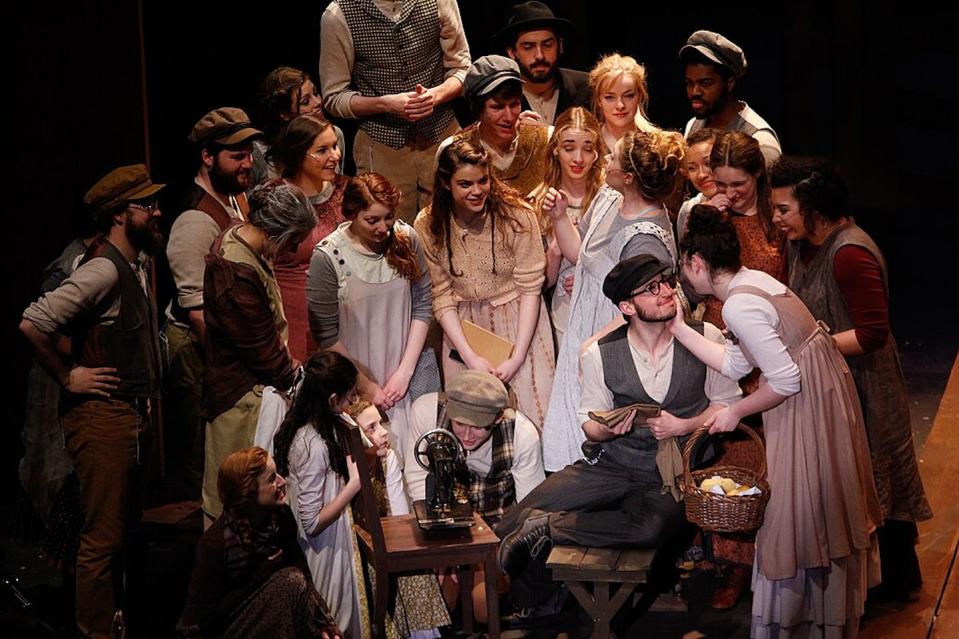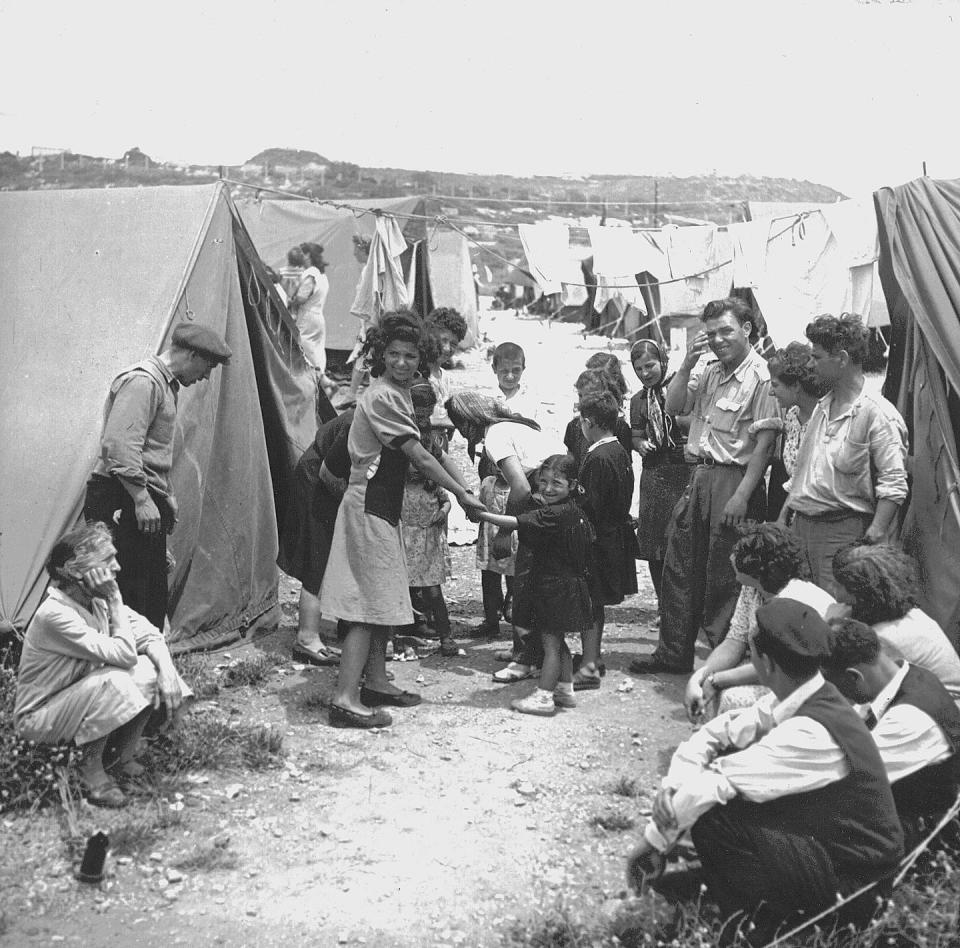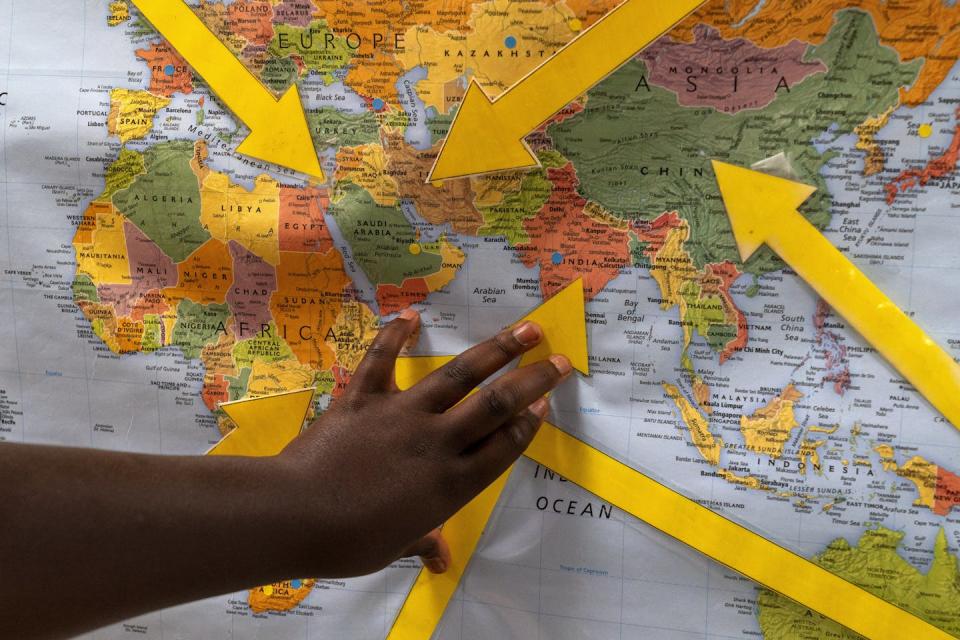‘Fiddler on the Roof’ may be many Americans’ image of Judaism – but American Jews’ heritage is stunningly diverse

“Tradition!” rings out the opening line of “Fiddler on the Roof,” the Broadway play that brought Jewish life to stages around the world. The 1964 musical gives audiences a window into Yiddish-speaking, rural Jewish life in 19th-century Europe.
For many people, this image represents Jewish history as a whole. When most Americans think of Jews, they think of Ashkenazi Jews: a term that refers to people of eastern and northern European Jewish culture. In American culture, Ashkenazi Jews are represented by cultural icons ranging from Tevye the dairyman and Yente the matchmaker in “Fiddler” to comedians Woody Allen and Sarah Silverman and author Philip Roth.
While Ashkenazi Jews do make up the majority of American Jews, the Jewish world is much more diverse that this picture suggests – including in the United States. The diversity of American Jews is a major focus of my own research: both through my current project, Jews of Color: Histories and Futures, and in my book about interfaith families, “Beyond Chrismukkah.”

From Iberia to the world
Descriptions of Jewish life often divide communities up into three main groups: Ashkenazi, Sephardic and Mizrahi Jews.
Spain and Portugal expelled Jewish inhabitants in the late 1400s, sending refugees fleeing around the Mediterranean and further north in Europe. Called Sephardi or Sephardic Jews, these people settled in North Africa, the Ottoman Empire, France, Italy and the Balkans, as well as Britain and the Netherlands.
At times, the term “Sephardi” is used to describe any number of other communities who are not Ashkenazi, even if they have no connection to the Iberian Peninsula: from Persian Jews and Kurdish Jews to Bukharan Jews of Central Asia, Beta Israel Jews in Ethiopia, and Cochin Jews in India.
Sephardic Jews often have different customs than Ashkenazi Jews, including melodies for prayers, foods and forms of observance. For instance, all Jews avoid “chametz” during the holiday of Passover: leavened food made with wheat, barley, spelt, oats and rye. Sephardic tradition, however, permits another category of food, “kitnyot” – rice, legumes and corn – which is traditionally forbidden to Ashkenazi Jews.
New word, old communities
The third category, Mizrahi, means “eastern” in Hebrew. It is a relatively new term, but describes communities with centuries of history. Hundreds of thousands of Jews from places other than Europe moved to Israel during the state’s early years in the mid-20th century. These groups – from Moroccan, Iraqi, Egyptian, Syrian and “Yemenite” communities, among others – came to be referred to as Mizrahi.

Some people in the U.S. identify as Mizrahi Jews, and there have been Ashkenazi and Sephardic Jews in the U.S. since the Colonial period.
Ashkenazi Jews make up the majority of American Jews today. Sephardic Jews were the most influential Jewish group during the Colonial period, however. Most of the oldest synagogues in the U.S. were built according to Sephardic customs.
Jews of color
In addition to these broader categories, 5% to 15% of American Jews identify as Jews of color. Surveys of the Jewish community have been notoriously bad at asking questions about race, so it is hard to pinpoint the exact the racial makeup. But researchers know that more and more Jews identify as Jews of color.
Jews of color are stunningly diverse. Some are descendants of communities that have always been Jewish and have never been considered “white” in America – like the painter Siona Benjamin, a member of India’s Bene Israel Jewish community who now lives in the U.S.

Other Jews of color are children of interfaith marriage. A number of celebrities fit this description, including actor Daveed Diggs, actress Rashida Jones, rapper Drake and feminist writer Rebecca Walker. Similarly, Angela Buchdahl, the first Asian American to be ordained as a rabbi, is the child of an Ashkenazi Jewish father and a Korean Buddhist mother.
Still other Jews of color were adopted into Jewish families. Children with non-Jewish birth parents are usually formally converted to Judaism, often at the time of adoption. As Ashkenazi Jews make up the majority of American Jews, these children are usually adopted into homes that reflect Ashkenazi approaches to Jewish life.
As is true of all adoptions, families make a range of choices about whether to include their children’s birth culture in their upbringing, and how. Families are often more comfortable infusing elements of Buddhism into their Jewish homes, for example, than including aspects of Christian or Muslim cultures.
Choosing Judaism
Multiracial and adopted Jewish children’s experiences vary, of course, but they often encounter challenges as they grow up and move away from their familiar childhood synagogues and Jewish groups. As adults in new Jewish communities, some of them find their Jewish identity is more frequently questioned than in spaces where everyone knew them and their families.
Many Jews of color report that people often assume that they converted to Judaism as adults. Certainly, some Jews of color have – perhaps most famously, the musician Sammy Davis, Jr. A more contemporary high-profile example is Michael Twitty, an African American Jewish food historian and cookbook author.
Converts often feel expected to explain themselves and their motivations, though Jewish law forbids calling attention to someone’s conversion. In addition, the reality remains that the majority of Jews of color are not converts to Judaism.
‘What brings you here?’
As much Jewish diversity as there is, much of it is invisible to the wider world, even the wider Jewish world.
Many people assume that “the” Jewish experience is the Ashkenazi experience. Therefore, they also assume that Jews are white. There have been times in American history when white Americans have considered Jews as racial outsiders. However, most race-based laws in the U.S. have treated Jews of European heritage as white, which has given them legal protections and economic advantages not available to other American minority groups.
This assumption that the real Jewish experience is Ashkenazi is called “Ashkenormativity.” Like any culture, Ashkenazi culture has many wonderful things: Bagels! Matzo ball soup! Yiddish theater! Klezmer music! Really beautiful prayer melodies and really acerbic humor! Yet Ashkenormativity can be a problem.
First of all, the rich traditions of those other Jewish cultures can be marginalized – or exoticized, if they are included at all. More importantly, the assumption that Jews are Ashkenazi and white can make Jews of color feel unwelcome or unsafe.
I was recently at a synagogue dinner with three other visitors. I am Indian American, and the others were white. Total strangers asked about my heritage, and when I revealed that I am not from an Indian Jewish community, they asked if I was, in fact, Jewish.
Meanwhile, the hosts simply assumed the other guests were Jewish, and tried to recruit them to join the synagogue. This happened despite the fact that the people at our table had already heard me say the blessings over the wine and bread, in Hebrew, without looking at the printed prayers.
My story is annoying, but other people, particularly Black Jews, have stories of being followed around in synagogues because people assumed they did not belong. In a world of rising antisemitism, synagogues are increasing security – but sometimes without thinking about how that affects the safety and comfort of their members of color.
There is a huge diversity of viewpoints and experiences among white Jews. Jews of color bring additional perspectives on everything from racial justice issues to the current war in the Middle East. Remembering that full diversity can help us remember to see American Jews not as a narrow demographic, but as a kaleidoscope.
This article is republished from The Conversation, a nonprofit, independent news organization bringing you facts and trustworthy analysis to help you make sense of our complex world. It was written by: Samira Mehta, University of Colorado Boulder
Read more:
Asian Jewish Americans have a double reason to celebrate their heritage in May
A century ago, anti-immigrant backlash almost closed America’s doors
Samira Mehta receives funding from the Henry Luce Foundation for a project called Jews of Color: Histories and Futures.


